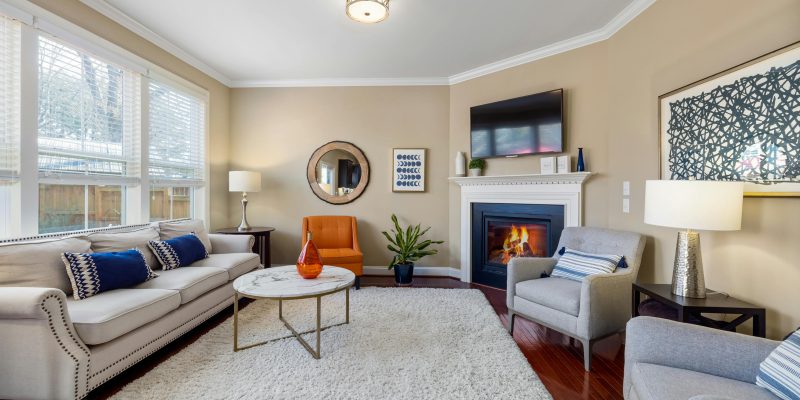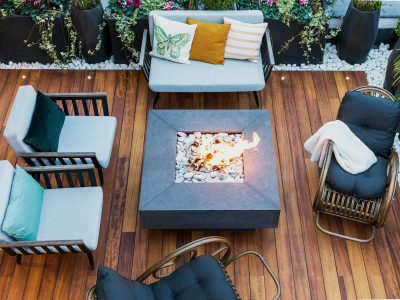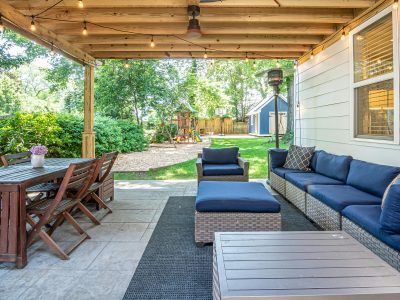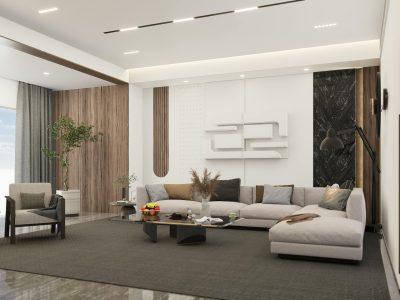An artistically designed sitting area is a space that provides comfort, personality, and harmony to a home. Placing furniture correctly can open up a small space or warm up a larger one. The livability aspects of your living room depend significantly on how you plan your living room furniture layout — movement, conversations, aesthetics, and a well-organised and inviting space all boil down to this.
Creating a Functional Foundation
Identifying the dimensions, space, and purpose of a living room is the first step in layout. All furniture should?serve a functional purpose and be comfortable. Helpful to visualise the layout and movement patterns before new elements are added.
A rectangular room might require a different arrangement than a square one. For example, in longer rooms, it often works well to have this split into sections — one for seating and the other for reading or ?entertainment activities. Similarly, spaces with square areas work well with furniture gathered around a focal point — think a coffee table or rug.
Establishing a Focal Point
A visual anchor is needed?in every living room. A focal point, such as a fireplace, television, or large, appealing ?window. Choose a focal point and arrange?your furniture around it.
- Configurations that centre around a fireplace can evoke conversation and warmth.
- If you enjoy movie nights with your family, a TV-centric setup is ideal.
- Windowed plans invite sunlight and balance comfort with views.
- The idea is to ensure that furniture does not obstruct the aisles and that the focal point of attention can be seen from the entire room.
Balancing Comfort and Flow
Spaces are not cramped, and people can move around freely here. Providing sufficient distance between furniture makes seating more comfortable and the use of the items?more convenient. A table should have no creepers or sofas crowding it, and chairs can be pulled out easily.
An ideal walkway should be two to three feet wide. This subtle nuance goes a long way in both aesthetics and functionality. Larger furniture can be placed against walls to open up the centre of the room, or can float slightly toward the centre of the setting to add a warm, delineated feel.
Arranging for Conversation
Because a living room is an interaction chamber, seating is a crucial feature in how people interact. If the furniture is too far apart, it discourages conversation; if it is too close together, it can feel too cramped.
To maintain balance:
- To communicate clearly, keep the seating approximately eight feet away.
- Use side tables next to couches or chairs for added convenience.
- To add visual interest and comfort, incorporate?furniture ranges of varying shapes.
- The armchairs,?the sectional, or the loveseats can all help create a friendly and flexible seating arrangement.
Layering with Accessories
It is everywhere these subtle touches come together, which makes a living room furniture layout feel complete. Warm and personalised accents with rugs, cushions, lamps, and plants. In open-plan homes, rugs help define?areas.
When layering decor elements:
- Since the workplace is a mix of function and mood,?go for the lighting that brightens up both.
- Place rugs under seating areas to anchor them in place.
- Balance the Accessories — Ensure that you don’t over-stack spaces.
- This layered aesthetic adds warmth and sophistication?to the space.
Adapting to Changing Needs
A well-designed layout allows flexibility. Family routines themselves change, and so does the furniture?you prefer. Select lightweight or modular pieces to allow for a free flow of arrangement in the room, when required.
Keep your small space equipped with multifunctional furniture, such as storage ottomans or foldable/extendable tables. For larger rooms, they can be rearranged to create new, separate areas for reading or talking.
Adaptability keeps the space both functional and beautiful, accommodating changing lifestyles.
Lighting and Symmetry
Lighting goes a long way in determining?the feel of a room. A poorly lit show is enough to suck the glamour out of even the best layout. The combination?of natural and artificial lighting itself makes all the difference. Different zones should be illuminated using table lamps, floor lamps, and ceiling fixtures, but the overall tone should remain consistent.
Symmetry brings serenity to the?mix. A perfect set of matching lamps, balanced artwork,?or aligned furniture gives the area the feel of being organised without it coming across as too stiff. Such hidden orders serve to enhance visual comfort.
Conclusion
Without even thinking about it, you play the role of a designer when planning a living room furniture layout — after all, putting pieces together should be the easy part, right? It takes a sense of space and balance, as well as intention. A good setup facilitates easier dialogue, movement, and a more enjoyable atmosphere.
When form meets function, each space can be both lively and restful. Whether the intention is simple or grand, careful consideration allows the space to radiate warmth, individuality, and enduring beauty.













Comments